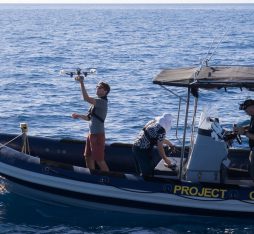● Since the late 2010s, academic research has tested artificial intelligence and computer vision approaches that make use of deep-learning algorithms to address this problem.
● Although increased automation may pave the way for more frequent detection over wider areas, emerging solutions will still have to contend with constraints in the field and a lack of algorithm training data.
According to current estimates, there are around eight million tonnes of plastic waste floating around in the world’s oceans. The drive to contain this phenomenon necessarily involves monitoring of the myriad of chaotic trajectories followed by this debris before it reaches the high seas. These are subject to variations in river levels, the presence of dams and any number of diverse and unpredictable geographical conditions, which make monitoring missions all the more difficult. Given this context, researchers have been developing techniques to automate waste detection that draw on machine learning, and in particular deep learning using . Satellites, planes, balloons, drones and boats have thus been equipped with computer vision systems trained to detect plastic waste, and in theory, these innovations will pave the way for more regular detection over larger areas. However, they are still beset by a number of constraints.
Detection over even larger areas
“Convolutional neural networks integrate the capacity of describing different visual properties (e.g., colour, texture, shape) of images with the use of this information for determining if a given image region contains the object (e.g., litter) of interest”, explains Ricardo da Silva Torres, a professor of data science and artificial intelligence at Wageningen University & Research in the Netherlands, and of visual computing at the Norwegian University of Science and Technology.
Convolutional neural networks integrate the capacity of describing different visual properties (e.g., colour, texture, shape) of images
In 2021, several of the responses to a European Space Agency (ESA) call for tenders for projects to detect marine plastic litter adopted this approach. In the same year, the non-governmental organisation The Ocean Cleanup announced that it had developed its own artificial intelligence surveillance and mapping tool.
The role of material reflectance
But how effective have they proved to be? This is what an August 2022 article published in the scientific journal Water Research by researchers at the Federal Institute of Hydrology in Koblenz, Germany, sought to evaluate, because various different methods are involved. Some of these are based on the reflectance of plastics (levels of light reflected by the material), which differs from those reflected by natural materials (algae, wood, spume). In 2020, a team led by Lauren Biermann, of the Plymouth Marine Laboratory (United Kingdom), showed for the first time that it is possible to find patches of marine plastic using optical satellite data, in this case from the ESA’s Sentinel-2 satellites. Other methods aim to recognize the shapes of objects (bottles, cans, bags, etc.), however, these only function at close range or over smaller areas.
The Koblenz researchers’ comparative study also pays particular attention to short-range detection, that is to say at a distance of less than 120 metres, as performed by aerial drones or permanently installed cameras on bridges or other elevated points, etc. There is no denying their conclusion: “To-date, none of the discussed automated approaches is able to replace traditional macro-plastic monitoring approaches, such as visual counting or site surveys.” There are too many disturbing patterns caused by illumination, ambiguously shaped objects, and local environmental factors, etc.
An acute lack of databases
Another problem is an acute lack of databases, which play a key role in machine learning. Those that exist are limited in size and insufficiently diversified. Building new ones amounts to a major project in itself. “Labelling images is a laborious and time-consuming task. Also, in several applications, it depends on the expertise of trained annotators”, points out Ricardo da Silva Torres, who also published a comparative study of deep-learning tools for plastic litter detection in January 2022. Having observed that there was only one publicly available dataset containing 1,500 images of plastic litter, he and his team developed a new one, PlastOPol, with 1,000 additional images.
In spite of everything, the Water Research article argues that there is still considerable potential for the automatic detection of marine litter. This will mainly depend on the improvement of algorithms to classify objects. In the future, with the analysis of spectral wavelengths and better segmentation, it will be possible to “discriminate between the multitude of objects potentially floating on the surface of water or washed ashore”.











